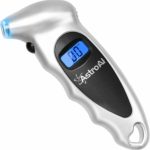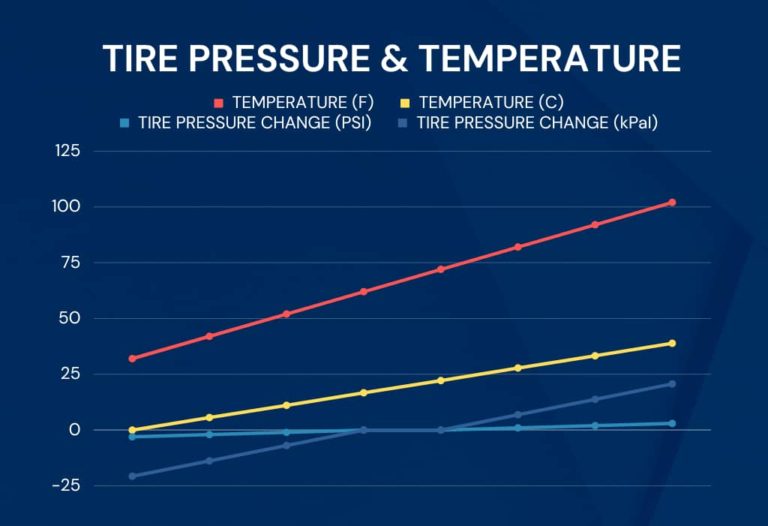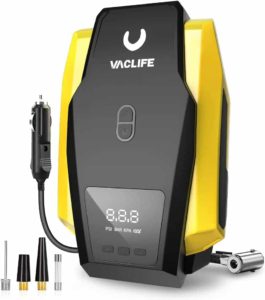What is the Infiniti QX80 TPMS?
When the tire pressure indicator flashes on the dashboard, it’s common to respond with an exasperated, “not this again!” This, however, is why the Infiniti QX80’s tire pressure monitoring system (TPMS) needs to be understood. The TPMS in the Infiniti QX80 is a state-of-the-art feature designed to enhance road safety and promote optimal vehicle performance. This intelligent system diligently monitors the pressure in each tire, alerting drivers via the dashboard indicator when tire pressure deviates from the optimal range. It’s important to know that Infiniti QX 80 does not have a dedicated button to reset or turn off the low tire pressure light. Don’t worry, there is still a procedure on how to reset the light.
Steps to Reset the Infiniti QX80 Tire Pressure Light
The Infiniti QX80 does not have a tire pressure reset button.
When the tire pressure light on your dashboard turns on OR your display reads “CHECK TIRE PRESSURE” OR “TIRE PRESSURE LOW ADD AIR” pull over slowly and check your tire pressure right away.
Put the SUV in Park and place the ignition switch to the ON position. Engine off, electricity ON.
Figure out which tire is low or high on air and adjust the tire pressure accordingly. (The TPMS lets you know which tire is low on your display by showing current tire pressures) As you add air to the tires the hazard indicator lights will start flashing.
Fill your tires to the exact recommended pressures. 35 Psi in the front and rear tires. I cannot emphasize this enough, accuracy is key. The horn of your car will beep once when the pressure reaches the correct level and the hazard indicators will stop flashing.
The tire light may not go off right away. Drive your Infiniti QX80. Drive for 10 or 15 minutes at speeds over 16 Mph so that your TPMS can recalibrate.
If the light doesn’t go off right away, re-check your tire pressure to make sure they are all at the exact pressure you set them to. If the pressure has decreased, you probably have some sort of leak in that tire.
If the pressures are at the exact pressure you set them to and the tire light still won’t go off, over fill your tires.
We recommend filling your problem tire with 45 Psi or about 10 Psi over the recommended pressure. With the tire overfilled, drive the car again for another 10 or 15 minutes. This will turn off the tire light.
Now that the tire light is off, readjust the pressure back to the recommended air pressures.
NOTE: If you’ve completed all of these steps and the tire light STILL won’t go out, There is only one of three things that can be the problem. Either have a faulty tire pressure sensor in one of your wheels OR you have a leak OR your receiver module (control unit) is not communicating with your sensors (this is the least of all likely and is rare). If you overinflate the tires by 4 Psi or more, the horn will beep again and the hazards will flash 3 times. Release some air if this happens and re check the pressure.
2023 Infiniti QX80 Tire Pressure
TIRE SIZE | FRONT PSI | REAR PSI |
275/50R22 | 35 | 35 |
275/60R20 | 35 | 35 |
SPARE TIRE | 60 | 60 |
How to Turn Off the Tire Maintenance Reminder
Use the right or left arrow on the left side of your steering wheel and select settings. (the Gear Icon)
Select Maintenance
Select Tire
Select Reset
Select Yes when asked to Confirm
How to Change Tire Pressure Units
Use the right or left arrow on the left side of your steering wheel and select settings. (the Gear Icon)
Select TPMS settings
Select between Psi, kPa or Bar
Select Yes to confirm.
How Does the Infiniti QX80 TPMS Work?
The Infiniti QX80 tire pressure monitoring system relies on several components and technologies to function correctly. Here’s an in-depth explanation of how this system works:
Sensors: Each wheel of your Infiniti QX80 (including the spare, in some models) is equipped with a tire pressure sensor. These sensors are battery-powered electronic devices that measure the air pressure within the tire. They are attached at the end of each valve stem.
Data Transmission: Each sensor operates on a unique frequency and transmits data wirelessly to the TPMS receiver, often incorporated into the vehicle’s ECU (Engine Control Unit) or BCM (Body Control Module). The sensors regularly send tire pressure information to the receiver. The system also transmits data about the temperature inside the tire, which can influence the tire pressure.
Data Analysis: The TPMS receiver analyzes the data received from the sensors. It compares the actual tire pressure against Infiniti’s recommended pressure levels. Which in the QX80’s case is 35 PSI (pounds per square inch).
Warning System: If the pressure in any tire drops below a specific threshold, usually about 15%-25% below the recommended pressure, the TPMS will trigger a warning light on your dashboard. On the Infiniti QX80, this is represented by a yellow exclamation mark inside a tire symbol. The system will also indicate which tire is under-inflated on your vehicle’s information display.
Maintenance and Battery Life: The battery life of the sensors is usually between 5-10 years. If the battery dies or the sensor is faulty, you have to replace the entire sensor. Unfortunately, you cannot just replace the dead battery.
Why is the Tire Light Flashing?
The Infiniti QX80’s TPMS also has a malfunction indicator to alert you when something is wrong with the system itself. The indicator uses the same yellow exclamation point as the low tire pressure light. The difference is that, if there is a problem with the system, the light will flash for approximately 1 minute and then stay on. The flashing will happen every time you start your car until the problem is fixed. When your tire light is flashing your QX80 will not be able to detect or signal low tire pressure. Basically, a blinking tire pressure light means there is a malfunction within the TPMS itself, rather than an air pressure issue. This is usually due to a faulty pressure sensor in one of your tires (a dead battery) or driving with the spare tire (if the spare doesn’t have a sensor in it). To figure out which sensor is malfunctioning or faulty, use a TPMS diagnostic tool and scan each sensor for diagnostic information.
Why is the Tire Light On?
What Will Cause the TPMS to Not Work Properly?
Using non Infiniti wheels or tire sizes.
If there is interference from an external device. This could be anything that emits radio signals.
If a thick window tint is installed. This could interfere with the radio signals between the TPMS sensors and receiver.
If there is lots of snow or ice on or around the tire valves.
If the tire pressure is extremely high.
If wheels without tire pressure sensors are installed on the car, such as the spare tire.
If new tire pressure sensors are installed without registering the new sensor IDs with the QX80’s receiver module/ECU.
What Can Cause the Tire Light to Turn On?
Seasonal temperature changes: A drop in ambient temperature can cause tire pressure to decrease, triggering the warning light.
Tire puncture or leak: A sharp object or road debris like a nail or screw may puncture a tire, causing air loss which will of course activate the warning light.
Faulty tire pressure sensor: Damaged or malfunctioning sensors may provide inaccurate readings, resulting in a false alert. The only way to determine which sensor is faulty is to scan each sensor with a TPMS diagnostic tool.
Valve stem issues: A damaged or leaking valve stem can lead to gradual pressure loss and eventual activation of the tire pressure light. They make kits to replace the rubber gasket that usually goes bad.
Tire damage: Impact from potholes or hitting a curb can cause structural damage like tire bubbles, leading to pressure loss.
Sensor battery life: TPMS sensors are battery-powered, and over time, batteries die. (they usually last anywhere from 5-10 years) This will cause the tire pressure light to turn on. Again, you must use a diagnostic tool to determine which sensor is dead or dying.
Recent tire rotation or replacement: If the tires have been recently rotated or replaced, the TPMS may need recalibration to avoid false alerts. Sometimes the vehicle’s computer may think the front tires are in the rear and rear in the front after a rotation.
Wheel or rim issues: Damaged, corroded, or cracked wheels or rims can lead to air leaks and pressure loss. This is very common with low profile tires.
Altitude changes: Climbing or descending in elevation can affect tire pressure and trigger the TPMS warning. An additional 1.5 Psi per Km above sea level is required.
Natural pressure loss: Tires lose air pressure over time due to temperature changes and permeation. Tire dry-rot will happen to tires that sit.
Electrical problems or software issues within the car’s TPMS system. Occasionally the system may have a software update from Infiniti.
Snow Tires: If you have a separate set of wheels/rims for snow tires, either swap over the sensors from your summer wheels or purchase a second set of 4 sensors for the second set of wheels/rims. If you are using one set of wheels for both sets of tires, do not worry about this.
What Happens When Tires are Underinflated or Overinflated?
Maintaining the correct tire pressure in your Infiniti QX80 is crucial for both safety and performance. Both underinflation and overinflation come with their own set of issues.
Underinflated Tires:
Increased Tire Wear: Underinflated tires tend to wear out quicker because they put more tire surface area in contact with the road, leading to premature and uneven tread wear.
Decreased Fuel Efficiency: Because of the increased rolling resistance (the resistance that occurs when a tire rolls on a surface), underinflated tires will reduce fuel efficiency, leading to higher fuel costs.
Decreased Handling Performance: The flexibility of underinflated tires can make the vehicle harder to control, leading to poor handling, slow response in steering, and overall performance degradation.
Heat Buildup: Low tire pressure can cause the tires to overheat due to increased friction between the tire and the road. This heat can damage the tire’s internal structure and can even lead to tire failure.
Overinflated Tires:
Decreased Traction: Overinflated tires have a smaller contact patch (the part of the tire that contacts the road), which can decrease traction and make handling more difficult.
Increased Wear in the Center of the Tire: Overinflated tires tend to bulge outwards in the middle, causing the center of the tire to wear much faster than the edges.
Increased Risk of Tire Damage: Overinflation can make the tires more susceptible to damage, like blowouts and punctures. Tires that are overfilled are harder and less flexible so they don’t absorb impacts effectively, such as when hitting a pothole.
Rough Ride: Overinflated tires do not provide as much cushioning as properly inflated tires, resulting in a rougher ride. This can lead to a less comfortable driving experience and increased wear on your vehicle’s suspension components. Road noise will also be louder.
Decreased Handling Performance: Overinflated tires can affect the vehicle’s handling, making it more difficult to control especially in emergency maneuvers.
Does the Weather Affect Tire Pressure?
Weather changes can make your tire pressure go up or down. When it’s cold, the air inside your tires contracts and your tire pressure goes down. When it’s hot, the air expands and your tire pressure goes up. That’s why on cold mornings the low tire pressure warning light on your Infiniti QX80 might turn on, but then turn off as the day gets warmer or as you drive. Generally, for each 10-degree drop in temperature, your tire pressure will fall by about 1 Psi.
How to Adjust Tire Pressure:
Get a high-quality tire gauge.
Make sure to check the tire pressure when the tires are cold. “Cold” means your vehicle has been sitting for at least three hours or driven less than 1 mile in the past 3 hours.
Take off the valve cap from the tire valve stem.
Push the tire gauge firmly onto the valve to measure the pressure.
Compare the pressure reading with the recommended pressure on the tire information label. 35 Psi.
If the pressure is lower than the recommended pressure, add air.
If the pressure is too high, let out some air by pressing the metal stem in the center of the tire valve. You can use any object like a screwdriver to do this. Be gentle.
Recheck the tire pressure with the gauge.
Don’t forget to put the valve caps back on to prevent leaks and keep dirt and moisture out.
When is the Best Time to Adjust Tire Pressure?
To get an accurate measure on your Infiniti QX80’s tire pressure, check it when the car has been sitting for a while, like in the morning. This is called “cold pressure”. We suggest letting your car sit for at least 3 hours before adjusting your tire pressure. If you have to drive to an air pump, try and keep it to less than a mile of driving. This is because the more you drive, the warmer your tires get and the higher the air pressure will be. This leads to inaccurate and misleadingly high pressure readings. So, don’t adjust your tire pressure when your tires are hot, you’ll end up overinflating your tires!
Conclusion
The Infiniti QX80’s TPMS is a remarkable and highly underrated safety feature designed to keep your journey smooth and worry-free. This advanced system keeps a close eye on your tire pressure, alerting you whenever something’s off. By understanding how it works, you can ensure optimal performance and longevity for your tires. So, next time your tire pressure light pops on, don’t sigh in frustration! Instead, be grateful for the heads-up! Adjust your tire pressure accordingly, and keep cruising with confidence! Everything in this article is applicable to all Infiniti QX80 models and trims. Including QX80 LUXE, QX80 PREMIUM and QX80 SENSORY. v
Please note that this blog post contains Amazon affiliate links. This means that if you make a purchase through one of these links, we at TPMSRESET.com may earn a small commission at no extra cost to you. We only recommend products that we personally use and believe in. Thank you for supporting us.





